Stellar partnership doomed to end in catastrophe
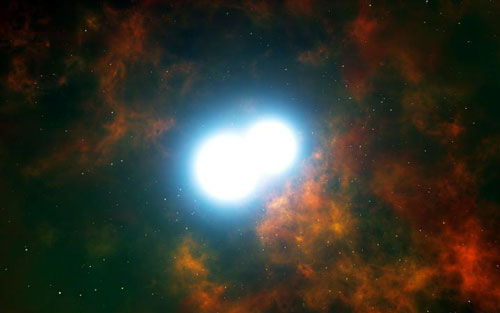 First pair of merging stars destined to become supernova found.
First pair of merging stars destined to become supernova found.
Feb 9th, 2015
Read more
 Subscribe to our Space Exploration News feed
Subscribe to our Space Exploration News feed
 First pair of merging stars destined to become supernova found.
First pair of merging stars destined to become supernova found.
Feb 9th, 2015
Read more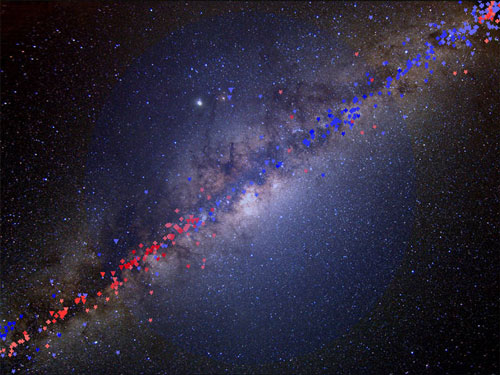 The Universe is pervaded by a mysterious form of matter, dubbed dark matter, about five times more abundant than the ordinary matter we are familiar with. Its existence in galaxies was robustly established in the 1970s. Scientists now obtained for the first time a direct observational proof of the presence of dark matter in the innermost part our Galaxy, the Milky Way.
The Universe is pervaded by a mysterious form of matter, dubbed dark matter, about five times more abundant than the ordinary matter we are familiar with. Its existence in galaxies was robustly established in the 1970s. Scientists now obtained for the first time a direct observational proof of the presence of dark matter in the innermost part our Galaxy, the Milky Way.
Feb 9th, 2015
Read more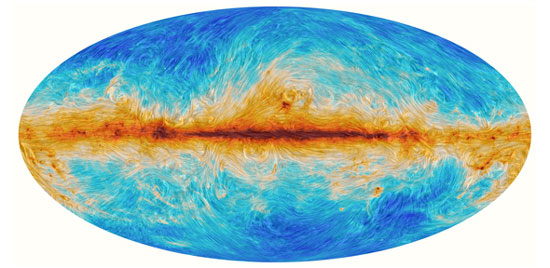 New maps from the Planck satellite uncover the 'polarised' light from the early Universe across the entire sky, revealing that the first stars formed much later than previously thought.
New maps from the Planck satellite uncover the 'polarised' light from the early Universe across the entire sky, revealing that the first stars formed much later than previously thought.
Feb 8th, 2015
Read moreA cluster of young, pulsating stars discovered in the far side of the Milky Way may mark the location of a previously unseen dark-matter dominated dwarf galaxy hidden behind clouds of dust.
Feb 8th, 2015
Read more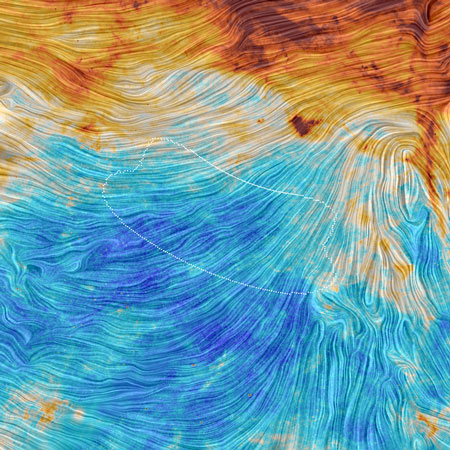 In March last year the BICEP2 team claimed to have observed, for the first time, the effects of gravitational waves in cosmic background radiation. In September Planck demonstrated that the signal observed might be the result of 'contaminants' due to the polarized radiation produced by our Galaxy. A new paper confirms the Planck observation: even following a more accurate analysis (and the adoption of new instruments) there is still evidence of contaminants.
In March last year the BICEP2 team claimed to have observed, for the first time, the effects of gravitational waves in cosmic background radiation. In September Planck demonstrated that the signal observed might be the result of 'contaminants' due to the polarized radiation produced by our Galaxy. A new paper confirms the Planck observation: even following a more accurate analysis (and the adoption of new instruments) there is still evidence of contaminants.
Feb 2nd, 2015
Read moreNew research suggests that a ground-based model simulating some of the effects of spaceflight on mice induces changes in B lymphocyte production in bone marrow.
Feb 2nd, 2015
Read more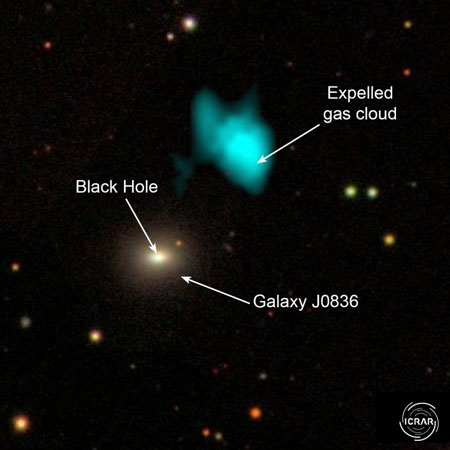 Galaxies can die early because the gas they need to make new stars is suddenly ejected, research published today suggests. Most galaxies age slowly as they run out of raw materials needed for growth over billions of years. But a pilot study looking at galaxies that die young has found some might shoot out this gas early on, causing them to redden and kick the bucket prematurely.
Galaxies can die early because the gas they need to make new stars is suddenly ejected, research published today suggests. Most galaxies age slowly as they run out of raw materials needed for growth over billions of years. But a pilot study looking at galaxies that die young has found some might shoot out this gas early on, causing them to redden and kick the bucket prematurely.
Feb 2nd, 2015
Read more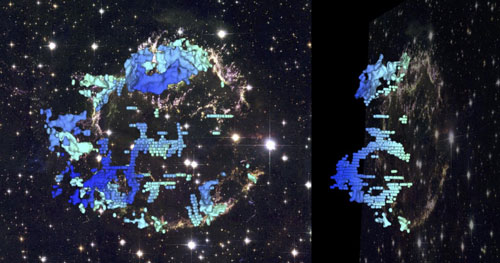 Cassiopeia A, or Cas A for short, is one of the most well studied supernova remnants in our galaxy. But it still holds major surprises. Astronomers have generated a new 3-D map of its interior using the astronomical equivalent of a CAT scan. They found that the Cas A supernova remnant is composed of a collection of about a half dozen massive cavities - or 'bubbles'.
Cassiopeia A, or Cas A for short, is one of the most well studied supernova remnants in our galaxy. But it still holds major surprises. Astronomers have generated a new 3-D map of its interior using the astronomical equivalent of a CAT scan. They found that the Cas A supernova remnant is composed of a collection of about a half dozen massive cavities - or 'bubbles'.
Jan 29th, 2015
Read more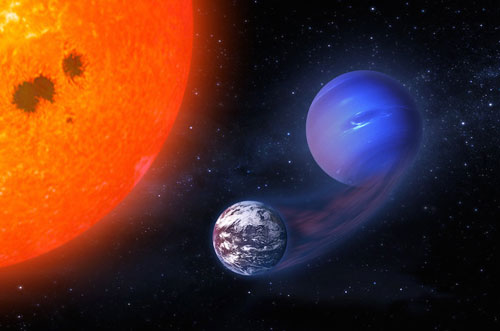 Two phenomena known to inhibit the potential habitability of planets - tidal forces and vigorous stellar activity - might instead help chances for life on certain planets orbiting low-mass stars, astronomers have found.
Two phenomena known to inhibit the potential habitability of planets - tidal forces and vigorous stellar activity - might instead help chances for life on certain planets orbiting low-mass stars, astronomers have found.
Jan 28th, 2015
Read more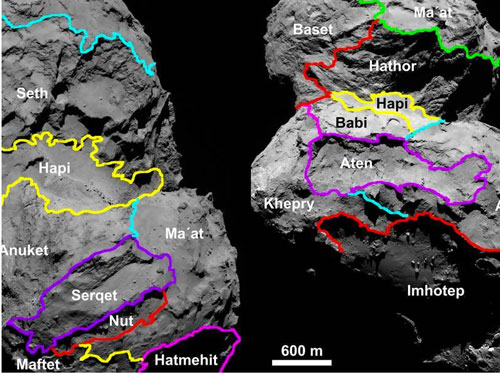 Measurement results from ESA's space probe provide a comprehensive picture of 67P/Churyumov-Gerasimenko.
Measurement results from ESA's space probe provide a comprehensive picture of 67P/Churyumov-Gerasimenko.
Jan 28th, 2015
Read more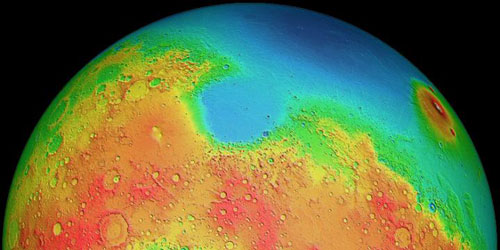 The two hemispheres of Mars are more different from any other planet in our solar system. Non-volcanic, flat lowlands characterise the northern hemisphere, while highlands punctuated by countless volcanoes extend across the southern hemisphere. Although theories and assumptions about the origin of this so-called and often-discussed Mars dichotomy abound, there are very few definitive answers. Geophysicists are now providing a new explanation.
The two hemispheres of Mars are more different from any other planet in our solar system. Non-volcanic, flat lowlands characterise the northern hemisphere, while highlands punctuated by countless volcanoes extend across the southern hemisphere. Although theories and assumptions about the origin of this so-called and often-discussed Mars dichotomy abound, there are very few definitive answers. Geophysicists are now providing a new explanation.
Jan 28th, 2015
Read more The astrophysics research group at Washington University in St.Louis built an instrument that is capable to measure the polarization properties of X-rays. This instrument, once flown in space, can be used in a novel approach to study the most extreme objects in the Universe, such as black holes and neutron stars.
The astrophysics research group at Washington University in St.Louis built an instrument that is capable to measure the polarization properties of X-rays. This instrument, once flown in space, can be used in a novel approach to study the most extreme objects in the Universe, such as black holes and neutron stars.
Jan 28th, 2015
Read more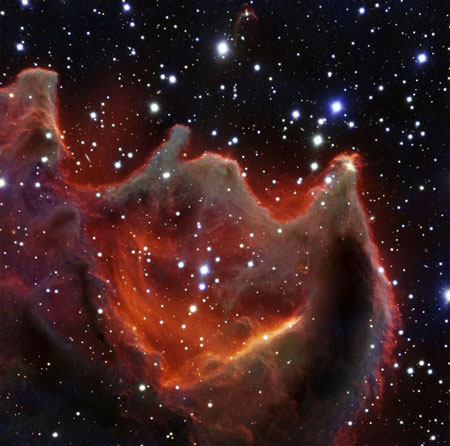 Like the gaping mouth of a gigantic celestial creature, the cometary globule CG4 glows menacingly in this new image from ESO's Very Large Telescope. Although it appears to be big and bright in this picture, this is actually a faint nebula, which makes it very hard for amateur astronomers to spot. The exact nature of CG4 remains a mystery.
Like the gaping mouth of a gigantic celestial creature, the cometary globule CG4 glows menacingly in this new image from ESO's Very Large Telescope. Although it appears to be big and bright in this picture, this is actually a faint nebula, which makes it very hard for amateur astronomers to spot. The exact nature of CG4 remains a mystery.
Jan 28th, 2015
Read more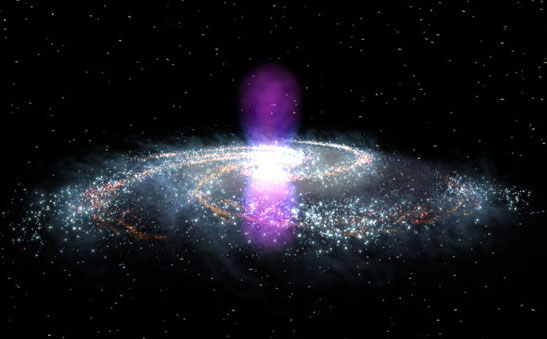 Fresh from giving the January Rossi Prize Lecture, the astrophysicists who discovered 2 enormous radiation bubbles in the center of our galaxy discuss what they may tell us about the Milky Way and how they could help in the search for dark matter.
Fresh from giving the January Rossi Prize Lecture, the astrophysicists who discovered 2 enormous radiation bubbles in the center of our galaxy discuss what they may tell us about the Milky Way and how they could help in the search for dark matter.
Jan 27th, 2015
Read more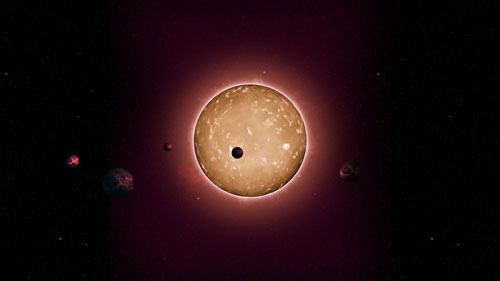 A Sun-like star with orbiting planets, dating back to the dawn of the Galaxy, has been discovered by an international team of astronomers.
A Sun-like star with orbiting planets, dating back to the dawn of the Galaxy, has been discovered by an international team of astronomers.
Jan 27th, 2015
Read more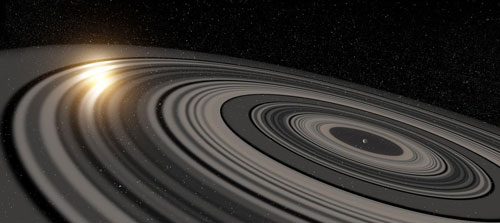 Astronomers have discovered that the ring system that they see eclipse the very young Sun-like star J1407 is of enormous proportions, much larger and heavier than the ring system of Saturn. The ring system - the first of its kind to be found outside our solar system - was discovered in 2012.
Astronomers have discovered that the ring system that they see eclipse the very young Sun-like star J1407 is of enormous proportions, much larger and heavier than the ring system of Saturn. The ring system - the first of its kind to be found outside our solar system - was discovered in 2012.
Jan 26th, 2015
Read moreXPRIZE, the global leader in incentivized prize competition, today announced that five Google Lunar XPRIZE teams have been awarded a combined US$5.25 million in recognition of key technological advancements toward their quest to land a private spacecraft on the surface of the moon.
Jan 26th, 2015
Read moreA swarm of tiny probes each with a different sensor could be fired into the clouds of Jupiter and grab data as they fall before burning up in the gas giant planet's atmosphere. The probes would last an estimated 15 minutes.
Jan 26th, 2015
Read more